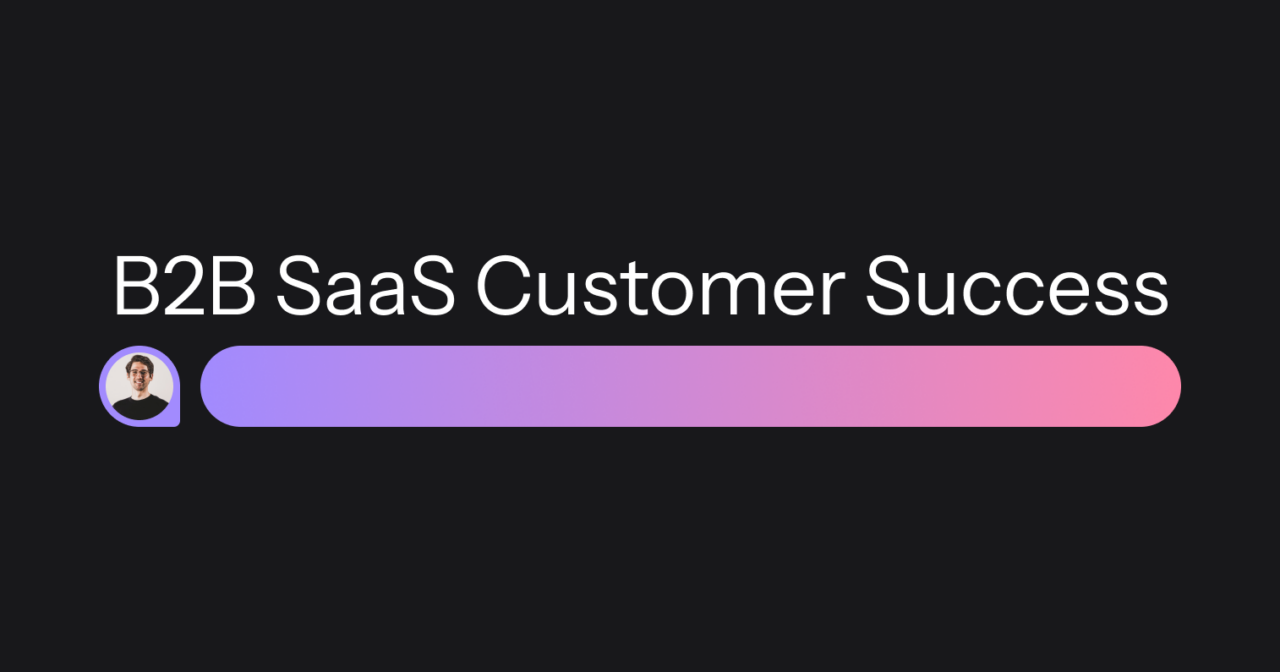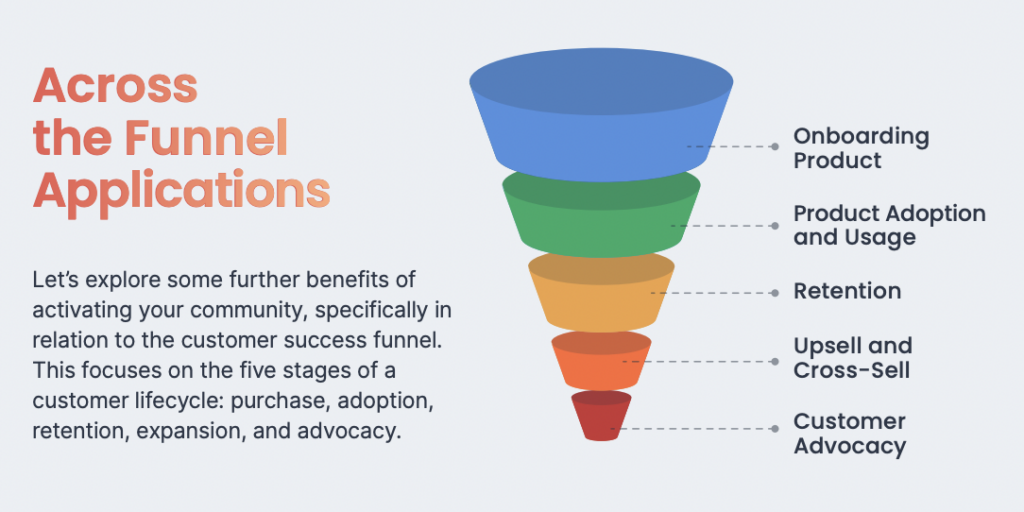How to Unlock Customer Success in Your B2B SaaS Company
→ Turn customers into product advocates, and activate retention and growth with our playbook here. ← Your customer success strategy could be what your B2B SaaS company needs to get to that next stage of growth. That’s because they impact every aspect of business — from customer retention and customer lifetime value to the reputation […]

→ Turn customers into product advocates, and activate retention and growth with our playbook here. ←
Your customer success strategy could be what your B2B SaaS company needs to get to that next stage of growth.
That’s because they impact every aspect of business — from customer retention and customer lifetime value to the reputation of your entire brand.
And when we say customer success, we don’t mean customer service. While customer service and customer success are sometimes used interchangeably, they’re not the same thing.
Customer service is about reacting to customer inquiries and complaints in real time. It usually relies on support channels like live chat, email, and social media.
If customer service is reactive, customer success is proactive. It focuses on helping customers get the most out of your products, and use them to reach their goals.
While 95% of B2B companies have some kind of customer success team, only 6% of revenue is directed toward customer success operations. And what a missed opportunity that is when the same research shows that increased investment pays off: because companies that allocate 10% of revenue to customer success have higher rates of net revenue retention.
That’s why it’s worth spending the time (and money) to define a strong community marketing strategy, one that drives SaaS business growth.
Here’s what you need to know.
6 steps every B2B should take to master customer success
To master customer success, include these six steps in your strategy.

1. Develop a robust onboarding process
Onboarding matters. As the first stage of the customer journey post-purchase, this process needs to be seamless.
Your customer success team should be on hand during the product adoption and setup process, to answer any questions as each customer gets to grips with your platform.
Offering an online community can help new customers feel supported, giving them access to self-service support and the chance to network with other members and brand experts.
2. Proactively monitor customer health scores
Customer health scores are an accumulation of a few metrics. They can be used to predict churn and retention, as well as a way to signal when there’s a problem. If you catch warning signs early you can resolve them before they escalate.
Some of the most important customer success metrics to monitor include:
- Customer feedback
- Support interactions
- Product usage
- Customer satisfaction scores
While these scores can be tracked manually, using an automated system is a faster option. Even better, integrate health scores into your existing helpdesk software or customer relationship management (CRM) software.
3. Foster strong relationships through regular check-ins
What happens to your customers after they’ve finished onboarding? Rather than let them get on with things themselves, regular check-ins can help them feel supported at all times. Aim for a high-touch process that includes regular, personalised communication.
4. Provide ongoing training and support
In tandem with the advice offered by your customer support and success departments, it’s important to offer a range of ongoing training. This can include email campaigns, training modules, and an online knowledge base.
Offering a comprehensive library of self-service content helps customers learn how to use your products better. Giving access to an online community platform also means they can connect with other users and seek advice.
5. Leverage feedback for constant improvement
Feedback is a vital component of customer success. Creating feedback loops makes it easy for customers to report any product issues, which can then be fed back to your product team for resolution. This improves your offering and boosts the customer experience.
Showing that you care what your customers think — and that you’re willing to make changes based on their opinions — is a powerful driver of trust as well.
6. Overcoming challenges in customer success
On paper, achieving the above steps seems pretty simple.
But when trying to implement customer success strategies, most businesses come up against a few challenges. These can include:
- Misalignment between teams
- Difficulty in defining and measuring success
- Scaling your customer success strategies to company growth
- Managing at-risk customers
- Resource allocation
Solving these challenges is key to unlocking the true potential of your SaaS customer success strategy.
Here’s how to overcome them:
Misalignment between teams
If your customer success, account management, and support teams aren’t aligned, it makes internal miscommunication more likely. What’s worse, it can increase friction and create pain points for your customers.
It’s important to encourage collaboration and communication between these teams, so everyone can work towards the same shared objectives.
Using CRM software can help ensure all team members have access to each customer’s full history.
Difficulty in defining and measuring success
If your team doesn’t know what success looks like, it’s like asking them to throw jelly at the wall and hope it sticks.
Rather than expecting your teams to work towards undefined goals, get clear about what success looks like — and how you’ll measure it.
Scaling your customer success strategies to company growth
As your company grows, the tools and strategies you relied on previously might no longer be good enough.
Hiring extra staff is one option, but automation and self-service tools are a powerful way to offer your customers the support they need, without additional staffing costs.
Managing at-risk customers
Once you’re monitoring customer health scores, you can use these to identify any at-risk customers.
The goal is to reduce churn rates, using a range of strategies like asking for feedback and adjusting the levels of support where necessary.
Assigning dedicated customer success managers with the knowledge and experience of dealing with at-risk customers can help provide the dedicated and personalised support these users require.
Looking at historical churn data can also help uncover patterns that may help you identify and support any current customers with a high probability of turning into at-risk customers.
If these customers do end up leaving, asking them for feedback is a valuable way to uncover data that can help you improve any issues that influenced their leaving.
Resource allocation
Not all customers need the same level of support at the same time. Knowing when and where to allocate your resources means you can create the biggest impact. Data analytics can help identify any areas that need additional resources.
For example, if a large number of customers are searching for information on how to achieve a specific action, consider creating a video tutorial or knowledge base article that covers this topic in detail.
Building a community can be a key part of customer success. Communities can help reduce pressure on your customer success team by allowing for quick self-service answers and peer-to-peer support. What’s more, communities tend to increase customer engagement and retention.
Set your customers up for success with Zapnito
The right platform can help you sidestep customer success challenges and create a powerful strategy that drives engagement and business growth. Ready to unlock customer success? Book your discovery call, and we’ll give you the keys.
→ Turn customers into product advocates, and activate retention and growth with our playbook here. ←
